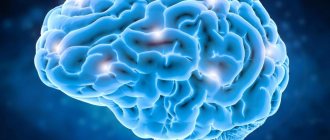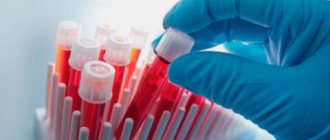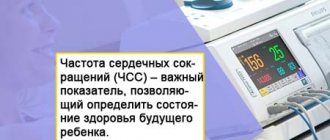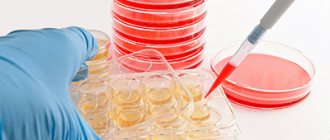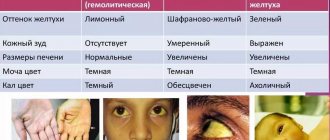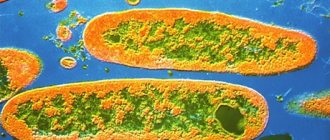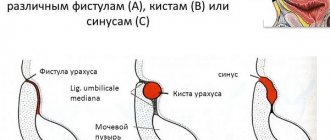Acetone in the urine of a child (ketonuria or acetonuria) is a fairly common condition. It can develop both against the background of temporary disturbances in metabolic processes in healthy children, and as a result of chronic diseases of varying severity (for example, diabetes mellitus).
Moreover, regardless of the etiology of the factors causing ketonuria, this condition is very dangerous for the child’s body. Without timely and adequate medical care, pathological manifestations can quickly worsen, leading to coma and even death.
Causes
What does acetone in urine mean? This is an increased level of ketones in the body. Ketones are chemical derivatives of fat and protein.
During normal functioning of the body, their quantity is normal, but if problems with the gastrointestinal tract appear and metabolic processes slow down, there are too many ketones and they begin to poison the body with toxins.
Therefore, one of the first symptoms of acetone syndrome is the strong smell of acetone in the child’s urine.
There are several reasons for increased acetone in the urine:
- diabetes;
- hypothermia or, conversely, overheating;
- hereditary predisposition;
- dehydration;
- unhealthy diet, which is excessively enriched with carbohydrates;
- impaired uric acid metabolism;
- liver dysfunction;
- the child’s crying and tantrums are prolonged;
- increased physical and emotional stress;
- viral infections;
- lipid and carbon metabolism disorders;
- anemia;
- stress;
- recent injuries;
- period after surgery;
- exceeding the dose of antibiotics;
- hunger;
- binge eating;
- oncological diseases.
Causes
It is important for parents to know why ketonuria can develop in children, as well as the main signs of this condition. This will help them recognize the initial manifestations of pathology in time and take appropriate measures to eliminate it. So, the main reasons for the increase in ketones in the blood, and therefore in the urine, in children are as follows.
Decreased blood glucose concentration:
- lack of easily digestible carbohydrates in the diet - with long intervals between meals, an unbalanced or strict diet;
- decreased function of carbohydrate processing associated with enzyme deficiency or their ability;
- increased sugar consumption in the body - injuries, surgeries, stress, relapse of a chronic disease, infections, mental and physical stress.
Excessive intake of proteins and fats from food or due to gastrointestinal dysfunction, leading to disruption of their processing processes. This requires the body to create conditions for intensive utilization of proteins and lipids, resorting to gluconeogenesis. Diabetes mellitus stands out as a separate cause, leading to a high content of acetone bodies, which is called diabetic ketoacidosis.
This pathology develops as a result of a lack of insulin, when normal or increased levels of glucose cannot be absorbed due to pancreatic dysfunction. It should be noted that when the temperature is observed in a child for a long time, an increase in the level of acetone in the blood and urine can often be observed. Below is a table of normal blood glucose values for children of different ages.
| Age | Normal values (mmol/l) |
| Up to 1 year | 2,8-4,4 |
| 1 year | 3,3-5 |
| 2 years | |
| 3 years | |
| 4 years | |
| 5 years | |
| 6 years | 3,3-5,5 |
| 8 years | |
| 10 years and older |
Acetonemia in childhood often manifests itself as a complex of certain symptoms, which is called an acetonemic crisis (AC). If such conditions are repeated two or more times, then acetone syndrome (AS) is diagnosed. Depending on the factors leading to an increase in acetone in the blood, primary and secondary AS are distinguished.
The latter develops as a result of diseases such as:
- pathologies of an infectious nature, which are characterized by high fever and vomiting (flu, sore throat, ARVI, intestinal infection);
- somatic (diseases of the gastrointestinal tract, liver, kidneys, thyrotoxicosis, anemia, diabetes, etc.);
- severe damage due to trauma, surgery.
While primary AS is mostly observed in children suffering from neuro-arthritic diathesis (NAD), which is also called uric acid. NAD is not considered a disease - it is a kind of anomaly in the development of the constitution, accompanied by a predisposition to the occurrence of pathological reactions to environmental influences.
With this deviation, excessive excitability, a shift in protein-lipid metabolism, and enzyme deficiency are observed. As a rule, children with uric acid diathesis are characterized by severe thinness, mobility and high excitability. At the same time, they are often ahead of their peers in intellectual development.
Their emotional state is quite unstable and is often combined with enuresis (uncontrolled urination) and stuttering. Pathological changes in metabolic processes in children suffering from NAD lead to excruciating pain in the joints and bones, as well as in the abdominal area. Some external influences can provoke AK in a child with uric acid diathesis:
- unbalanced or inappropriate diet;
- nervous stress, fear, pain;
- excessive positive emotions;
- long exposure to the sun;
- physical exercise.
Attention! The list of factors that can cause an acetonemic crisis in a child with NAD indicates that parents need to carefully plan their daily routine to avoid such complications.
Symptoms of occurrence
The most important thing is not to miss the first signs of increased acetone and start treatment on time.
Let's look at the list of these symptoms:
- smell of acetone from the mouth;
- smell of acetone from urine;
- vomit;
- stomach upset;
- increased body temperature;
- general weakness of the body;
- pain in the navel area;
- headache;
- dry tongue;
- lack of tears when crying;
- urinating less than once every 6 hours;
- drowsiness;
- weight loss;
- insomnia;
- rapid breathing;
- cardiopalmus.
Symptoms of acetonuria
Symptoms of this condition can increase very quickly, and in some cases even rapidly. Most often this happens:
- frequent uncontrollable vomiting, especially as a reaction to ingestion of liquid or any food;
- spasmodic pain in the abdominal area;
- increased body temperature;
- increase in liver size.
There are also signs of dehydration and intoxication - dry and pale skin, a decrease in the volume of urine produced, weakness, a coated tongue and blush on the cheeks. Then symptoms of dysfunction of the central nervous system may appear - in the initial stages of ketonemia there is excitement, quickly replaced by weakness, lethargy, and drowsiness. This condition can develop into a coma, and in some cases a convulsive syndrome develops.
Increased urea in urine - what does this mean?
But the very first symptom that parents and relatives of the child will pay attention to is, of course, the smell of acetone from the mouth, as well as from vomit and urine excreted. The smell of ketone bodies is quite peculiar - it has a sugary sweet-sour aroma, reminiscent of fruit, and more specifically, of rotten apples.
The smell can be very strong and is immediately detected upon contact with the child, but sometimes it is barely perceptible, even if the baby’s condition is quite serious and most of the signs of acetonia are visible on the face.
A urine test reveals ketonuria, blood biochemistry shows a decrease in the concentration of glucose and chlorides, an increase in the level of cholesterol and lipoproteins, and acidosis. In this case, a general blood test will determine an increased erythrocyte sedimentation rate (ESR) and an increase in the number of leukocytes. When secondary AS occurs, the symptoms of the underlying disease are added to the signs of true ketonemia.
You can determine ketonuria at home using special test strips. The strip is dipped into a sterile container with urine and then the resulting shade is compared with the color scale printed on the packaging. When the level of ketones is slightly exceeded, its color becomes pink, and when the level is high, the shade turns out to be closer to purple.
Instructions for self-determination of ketone levels
Treatment of elevated acetone
Depending on the severity of the condition, two treatment options will be prescribed:
- in hospital;
- at home.
During treatment in the hospital the following procedures will be prescribed:
- glucose droppers;
- injections of antiemetic drugs;
- enema;
- taking solutions that normalize electrolyte balance.
- antispasmodic medications;
- taking enzymes;
- taking sorbents;
- antidiarrheal drugs;
- drugs to maintain cardiac activity (if necessary).
At home includes:
- drinking plenty of decoction of raisins and other dried fruits;
- drinking with medicinal water (Borjomi, Essentuki 4(17);
- drinking plenty of unsweetened tea;
- taking sorbents (coal, Atoxil, Enterosgel);
- taking medications to restore electrolyte balance (Regidron);
- taking enzymes (Creon, Pancreatin).
Severe form of acetone syndrome
Nausea and vomiting, refusal to eat, high fever and lethargy indicate that fluid and glucose levels are very low and the pancreas refuses to work.
What you need to do first is not to feed and stop vomiting, call emergency help. If you delay this, the child may end up in intensive care. And ignoring this problem can lead to diabetes.
If it is not possible to call an ambulance, then:
- stop vomiting if possible
- give a little to drink at intervals
- cleansing enema and sorbents Enterosgel, Polysorb, Filtrum, etc.
- don't try to feed
- only drinking compotes, glucose solution
- rehydration solutions Gastrolit, Regidron, Oralit
- bed rest and no walks
- feed only when the nausea goes away
- the first meal should be liquid, light and salt-free
After the first symptoms, you will have to follow a diet for a long time.
The danger of increased acetone in urine
An increase in acetone in a child’s urine should not be ignored, since untimely treatment, or its absence, can lead to such sad consequences as:
- risk of developing diabetes;
- hypertension;
- slowing down metabolism;
- impaired functioning of the kidneys and liver;
- risk of developing cholelithiasis;
- joint diseases;
- severe dehydration;
- damage to brain cells and tissues.
How is acetone crisis diagnosed?
Diagnosis is based on medical history, patient complaints, and the results of laboratory and instrumental studies. A general and general clinical urine test is prescribed. When performing an ultrasound, a slight enlargement of the liver and pancreas can be detected.
The greatest difficulties for both the child and the pediatrician are caused by primary acetonemic syndrome associated with metabolic disorders. It occurs in a child with an abnormal constitution and incomplete metabolic processes (enzyme deficiency).
A constitutional abnormality can be determined by the level of uric acid in the blood. If it accumulates in the peripheral blood, stones can form in the ureter, bladder and kidneys. Uric acid has a negative effect on blood vessels.
What do traces of acetone in urine mean?
The appearance of traces of acetone in the urine is most often caused by a completely different disease. The fact is that a weakened body copes with the elimination of ketones, but rather poorly. This is called secondary acetone syndrome. Its reasons may be:
- diabetes;
- ARVI;
- thyroid diseases;
- gastrointestinal viruses;
- diseases of the genitourinary system;
- liver and kidney diseases;
- period after surgery;
- pharyngitis;
- angina.
Why are high levels of ketones in urine dangerous?
The accumulation of acetone in the body is fraught with acetone syndrome, which manifests itself:
- lacrimation;
- feverish condition;
- tachycardia;
- persistent vomiting;
- severe dehydration;
- sleep disturbance;
- neurological disorders;
- arrhythmia.
If the problem is ignored, the liver increases in size (hepatomegaly). Patients with severe acetone syndrome exhibit meningeal symptoms - involuntary flexion of the limbs, tension in the neck muscles.
Drinking regimen with increased acetone in a child
During the period of illness and recovery after a jump in the level of acetone in the child’s body, do not forget about the correct drinking regime.
Due to the significant loss of fluid due to diarrhea and vomiting, dehydration occurs, but you should not give your child a lot to drink, because excess water can lead to repeated bouts of vomiting.
The required volume of liquid is 1.5-2 liters per day. You should drink a couple of sips every 15-20 minutes, so the body has time to absorb the liquid without rejecting it.
Doctors recommend giving the following drinks:
- pure still water;
- not very sweet tea;
- dried fruit compote (increases glucose levels);
- raisin decoction (includes a large amount of fructose);
- alkaline medicinal water (Borjomi, Essentuki 4 or 17);
- special pharmaceutical electrolyte solutions (Regidron).
It is very important that the compotes and decoctions were sweet, but the daily intake should be no more than 5 mg per 1 kg of the child’s weight.
How is acetone formed in the body?
When carbohydrates enter the body, they are broken down into glucose and absorbed into the blood in the intestines. One part of the organic compounds is absorbed by cells with the release of energy, and the second is transformed into glycogen and accumulates in the liver tissue. With serious energy consumption - stress, exhausting physical work - glycogen again enters the bloodstream.
In most people, the liver has a high storage capacity, so energy reserves do not run out for a long time. But in 17-20% of young children, the liver tissue accumulates only a small amount of glycogen. And if it is exhausted, lipids (fats) begin to be used as an energy resource. When they are broken down, acetone or ketone bodies appear. If metabolic products are not removed from the blood for a long time, the child’s well-being worsens.
Acetone irritates the vomiting receptors, causing uncontrollable vomiting. Dehydration only aggravates the carbohydrate deficiency, as a result of which the concentration of acetone in the body increases.
The order of introducing products in the first days after a relapse
In the first days, the child may completely refuse to eat. Don't be alarmed, this is completely normal. Do not force him to eat, as you may trigger a repeated gag reflex. But don't forget to give your child something to drink.
After the child feels a little better and the vomiting stops, you should start introducing foods according to this scheme:
- 1 day. Rusks made from wheat or rye bread.
- Day 2. Add rice water and baked apples.
- Day 3. Add well-cooked rice porridge (you can grind it using a blender or coffee grinder).
- Day 4 You can offer soup with vegetable broth, the main thing is that it is not fatty and does not contain heavy foods.
- Day 5 You can slowly switch to the usual three meals a day diet in accordance with the diet recommended for high acetone.
How to reduce ketone levels
For moderate acetonuria, hospitalization is not required. The treatment regimen is determined by the doctor taking into account the OAM data. The main goals of treatment include:
- reducing the amount of acetone in the body;
- restoration of carbohydrate and lipid metabolism;
- normalization of liver functions.
To prevent acetone syndrome, diet, drug therapy and physiotherapy are prescribed.
Colon lavage
To cure a child, it is necessary to reduce the acetone content in the body. Indications for the use of cleansing enemas are:
- vomit;
- loose stools;
- weakness;
- lack of appetite;
- elevated temperature.
Features of performing an enema:
- sodium bicarbonate solution is used as a washing liquid;
- before administration, the tip of the enema or bulb is lubricated with Vaseline;
- the rubber tip is inserted into the anus to a depth of 3.5-5 cm;
- 150-500 ml of liquid is injected into the rectum (the volume depends on the age of the child);
- Without opening the enema, the tip is carefully removed from the anus.
The procedure is performed once a day, but only on the recommendation of a pediatrician.
Frequent drinking
Treatment of acetone in children at home requires compliance with the drinking regime. To restore water and electrolyte balance and prevent dehydration, use the following as a drink:
- weak tea with honey or sugar;
- fruit compotes;
- herbal decoctions.
If the child is vomiting, they give powders with electrolytes and carbohydrates - Regidron, Gidrovit, Orsol, Electral. To restore liver function, it is recommended to give your baby alkaline mineral water.
Diet
Diet therapy is one of the most effective methods of preventing acetone syndrome in a child. To compensate for the lack of glucose, easily digestible carbohydrates are introduced into the diet:
- berries;
- milk;
- yogurt;
- dried fruits;
- vegetables;
- muesli;
- honey;
- watermelon;
- cottage cheese;
- fresh fruits;
- pancakes.
The consumption of foods with protein components, lipids and amino acids is limited. During treatment the following are excluded from the menu:
- fish;
- meat broths;
- smoked meats;
- fast food;
- offal;
- fat meat.
If a baby has acetonuria, it is necessary to increase the frequency of breastfeeding. If the baby is bottle-fed, use anti-reflux formulas with a high glucose content.
Medicines and enterosorbents
Drug therapy is aimed at eliminating intoxication and liver dysfunction. For acetonuria, the following groups of drugs are used:
- antiemetics (Domperidone, Cerucal) – eliminate nausea and vomiting;
- sedatives (Glycine, Atomoxetine) – have a calming effect on the nervous system, reducing anxiety and irritability;
- antispasmodics (Drospa forte, No-shpa) - relieve cramping pain in the abdomen.
Children with severe intoxication are prescribed infusion therapy. It involves intravenous administration of saline preparations and glucose.
To improve the condition of the liver, herbal hepatoprotectors are used - Hofitol, Artichol, Holosas, etc. For symptoms of hypovitaminosis, multivitamin products are recommended - Multivit, Supradin Kids, Vitrum, Pikovit, Aevit. To quickly remove toxins, sorbents are used - Polysorb Polyphepan, Filtrum, Enterosgel. Drinking alkaline water speeds up the elimination of toxins in the urine.
Diet with high acetone
If acetone is elevated, be sure to follow a diet to reduce the risk of relapse and improve the child’s condition during the period of treatment.
You should give preference to the following products and dishes:
- vegetable soups;
- porridge without oil;
- dried fruit compotes (preferably apples);
- non-acidic fruits;
- lean meat and fish;
- vegetables in raw, boiled or baked form (potatoes, cabbage, pumpkin, carrots, beet);
- low-fat dairy products;
- biscuits and crackers;
- marmalade, marshmallows.
Lifestyle of a child with increasing acetone levels
If a crisis has occurred for the first time, you need to undergo an examination to exclude / confirm pathologies of the thyroid or pancreas, liver.
If acetone surges occur regularly, all efforts should be directed toward prevention. It is necessary to reduce physical activity, it should not be excessive.
It is necessary to minimize stress and nervous overexcitation. The daily routine is important. You need to limit watching TV and computer games.
The diet must be constant. Light, quickly digestible food is the basis of the diet. The menu should be dominated by foods rich in fiber and carbohydrates, both fast and slow.
Fatty meat and fish are prohibited. It is necessary to exclude smoked meats, pickles, and a large number of preservatives. No chips, soda, canned food, fast food.
It is harmful for a child with acetone syndrome to overeat; split meals are indicated. On average there should be 5-7 meals.
If ARVI provokes a crisis, it is necessary to strengthen the child’s immunity. Take a course of multivitamins two or three times a year.
Prevention of increased acetone in the urine of a child
To minimize the possibility of increased acetone in the urine, you must follow a few simple rules:
- maintaining the correct daily routine;
- eliminate harmful, high-carbon foods;
- play sports or at least just be in the fresh air more often;
- taking multivitamin medications;
- hardening;
- good nutrition, exclusion of strict low-calorie diets;
- avoid overheating and hypothermia;
- in the presence of concomitant diseases, regularly visit the doctor and follow all his recommendations;
- excluding self-medication.
What is acetone syndrome and why is it dangerous?
A person is a very interesting mechanism, and a child’s body, even more so, is a whole universe in which everything happens according to its own special laws. Therefore, the reaction to any stimulus can be unpredictable.
Any stress and changes in a child can cause severe stress. Acetone in the urine is an adaptive reaction to it. When nervous tension causes a powerful surge of energy, the body uses up all its glucose reserves and is forced to turn to fats.
Acetonemic syndrome is a metabolic crisis resulting in an acute disturbance of metabolic processes. It is characterized by the accumulation of ketone bodies in the blood, products of incomplete breakdown of fats, which are very toxic and lead to poisoning of the body.
The body draws the energy it needs from glucose, thanks to which all vital processes occur. And cells store energy to carry out important cellular functions.
Entering the body in excess amounts, glucose is deposited in the form of glycogen reserves, mainly in the liver. During emotional or physical stress in children, these reserves are quickly depleted, and then the body uses fats as an energy product.
After the breakdown of fats, acetone and glucose are formed (1 to 3). If your child's urine smells like acetone, it means his body has run out of glucose reserves.
Normally, the content of acetone in a child’s urine should be zero; with a small amount, acetone is processed with the help of nerve cells and is independently excreted through the respiratory system without causing harm to the baby.
The presence of acetone in a child’s urine test is a common occurrence and in most cases can be easily resolved after reviewing lifestyle and nutrition.
Diagnostics
To determine the amount of acetone in a child’s urine, it is necessary to use laboratory urine tests.
More reliable results are obtained when studying the morning portion. The number of ketone bodies is calculated using special samples with reagents. All types of laboratory urine tests have a similar quantitative interpretation:
- “-” - the test is negative, ketone bodies are absent in the urine.
- “+” - the analysis is weakly positive, a mild form of ketonuria.
- “2+” and “3+” - the test is positive, ketonuria is of moderate severity.
- “4+” - the urine contains a large amount of ketone bodies, ketoacidosis.
Parents can also use special strips sold in pharmacies.
This diagnostic method is widely popular because it is quick and does not require going to a medical facility. Test strips can only be used on fresh urine collected no more than 2 hours ago. After immersion for a few seconds, they change color, indicating the degree of ketonuria. The result obtained should be compared with the sample included with the test strips.
An indirect sign of ketonuria is a change in the biochemical blood test. Laboratory test results may show increased levels of urea and creatinine. A general blood test sometimes reveals an increase in hematocrit.
Treatment
When treating ketonuria, it is first recommended to treat the underlying disease.
The child is prescribed bed rest; parents should create comfortable conditions. Heavy physical activity and emotional stress are contraindicated for children suffering from ketonuria. Treatment of ketonuria includes following a diet. Children are recommended to eat a diet with an increased proportion of carbohydrates and proteins, as well as a limited amount of fat. Meals should be frequent - at least 6-7 times a day. If you have diabetes, insulin injections are required.
To speed up the removal of ketone bodies from the body, cleansing enemas are prescribed. In addition to them, sorbents can be used. Drinking plenty of fluids also promotes rapid elimination of acetone. In the absence of contraindications, preference should be given to sweet tea.
For moderate ketonuria, infusion therapy is recommended. It is carried out in a hospital setting, allowing you to get rid of ketones in the blood. Most often, infusion therapy is carried out using solutions of salts and glucose.
Treatment of ketoacidosis is carried out in intensive care conditions. To normalize the acid-base balance, children are prescribed infusion therapy, combining solutions of salts, glucose, and albumin.
At the present stage of medicine, in the presence of diabetes mellitus, preference should be given to solutions containing sorbitol. This polyhydric alcohol provides the child’s body with energy regardless of insulin.
Pathogenesis
Almost all cells in the human body use glucose for nutrition.
With its deficiency, a slowdown in energy metabolism and a state of oxygen starvation are observed. The main source of glucose is carbohydrates obtained with food and stored in the liver in the form of glycogen. For various reasons, the amount of glucose in the blood may decrease. To restore metabolic processes, the human body is forced to look for a new source of energy. When there is a lack of carbohydrates, it uses fats.
The body cannot use large fat molecules to nourish cells. That is why their disintegration is observed before assimilation. During the decomposition of fats, ketone bodies are formed and enter the blood. The plasma is filtered by the kidneys, so acetone and its derivatives are then observed in the urine.
Detection of acetone in urine analysis in children
If the absorption of fats and carbohydrate metabolism is impaired, an increase in ketone bodies can sometimes be observed. This disorder is called ketonuria or acetonemia. In a normal state, the content of these substances in the body is minimal, and it is detected only during a clinical examination of urine.
It is important to know! Ketones are a source of energy, but under certain circumstances they can have toxic effects on life support systems and the central nervous system.
The development of acetonemia is due to increased sensitivity to fluctuations in blood glucose levels. The presence of organic matter in urine can be determined using analysis in a clinical laboratory or a rapid test at home.
Acetone production in the body: how it happens
Elevated levels of acetone occur as a result of ketoacidosis - the accumulation of ketone bodies in the blood. As their concentration increases, the kidneys begin to work harder and actively remove these components from the body in order to improve its health and reduce the toxic effects. To understand the characteristics of ketones in a child’s urine, it is necessary to identify the causes of the process, as well as have an idea of the mechanism of acetone production and its appearance in the urine.
The main source of energy consumed by cells, according to Dr. Komarovsky, is glucose. It is synthesized from easily digestible carbohydrates contained in food products. Without a sufficient supply of energy, nerve and muscle tissue cells are unable to function properly. If the reserves of a natural source decrease, then the body seeks its reserves within itself. That is, it receives them from the breakdown of fats and proteins. This process is considered abnormal, that is, pathological, and is called gluconeogenesis.
With absolute health and the body’s normal ability to utilize toxic ketone bodies, the latter do not have time to accumulate and are quickly eliminated naturally. Otherwise, the amount of acetone gradually increases and reaches a critical concentration. Metabolic acidosis develops. Lack of medical care leads to coma. As a result, the child may die from heart failure or dehydration.
The concept of the normal level of acetone in a child’s urine
Normally, ketone bodies, including acetone, are not detected in the urine, since they are excreted daily in the amount of 25-30 mg per day. A newborn may contain them in minimal quantities, which means indicators of 0.01 - 0.03 g. When kidney function deteriorates, partial removal from the body occurs with exhaled air, then with sweat through the pores of the skin.
Acetone levels can be detected using a test strip or clinical test. If dirty dishes were used to collect urine or personal hygiene rules were not followed before filling the container, the analysis may give false data.
Reasons for the increase in indicators
Before starting treatment for the disease, it is necessary to find out the cause and identify one or more provoking factors. If acetone is detected in a child’s urine, parents must know what it is in order to recognize the initial manifestations of the pathology in time. So, experts call the following factors the main reasons for the increase in ketone bodies in the baby’s body.
Lack of easily digestible carbohydrates in the diet. This occurs in most cases with an unbalanced or strict diet, due to long intervals between meals. Increased sugar consumption in the body. This is facilitated by injuries, stress, operations, infections, relapses of chronic pathologies, mental and physical overload.
Deterioration of the carbohydrate processing process. The reason is a lack of enzymes or their limited abilities.
The development of acetonuria can also be provoked by elevated glucose levels. As a rule, this happens in the following cases:
- stressful situations or overwork;
- heat;
- bacterial sore throat;
- colds, ARVI;
- pyelonephritis, cystitis;
- hot weather conditions;
- poisoning
It is important to know! If there is acetone in the urine of a child, diabetes mellitus is the main cause. This disease contributes to the development of acetonuria. The presence of diabetic ketoacidosis excludes the possibility of normal glucose processing due to insufficient insulin production.
Associated symptoms
In the absence of adequate and timely treatment, ketonuria can rapidly increase, which will ultimately provoke an acetonemic crisis. This disorder is considered a childhood disorder and is extremely rare among the adult population. It represents a whole complex of negative manifestations. Acetone in the urine of a child has the following symptoms.
- Frequent episodes of vomiting and with copious discharge of masses.
- Strong odor of acetone in vomit.
- Deep and noisy breathing, rapid heartbeat.
- Increased body temperature that persists for a long period of time.
- Weakness, drowsiness, exhausted and tired appearance.
- Convulsions, lethargy, photophobia.
- Nausea, lack of appetite.
- Painful sensations, cramps and cramps in the abdomen.
In a urine test, a high content of acetone is determined in an infant; a biochemical study reveals a decrease in the concentration of glucose and chlorides and, conversely, the ability to increase the level of cholesterol and lipoproteins.
The diagnosis of “acetonemic syndrome” is made if the child has several acute crises during the year. The condition can be of the following types:
- primary – occurs in children with neuro-arthritic diathesis;
- secondary – occurs in the presence of various pathologies.
It is the latter option that develops against the background of infectious processes, somatic diseases, injuries, anemia or diabetes. In this case, the signs of the syndrome are combined with manifestations of the underlying pathology.
Possible consequences for the child
The essence of acetonemic syndrome is the appearance of signs indicating the presence of a significant amount of acetone in the urine. An increase in ketone bodies is observed mainly in children under the age of 12 years, which is due to the end of the formation of the body’s enzymatic system. In the absence of laboratory diagnostics and adequate therapy, crises are repeated with a certain frequency. This can provoke the development of complications such as:
- hypertonic disease;
- pathologies of the kidneys, liver, biliary tract, joints and bones;
- diabetes mellitus
Therefore, it is so important to be attentive to the child’s well-being and even minor deviations in his health.
Self-diagnosis at home
You can check for the presence of acetone in urine not only in the laboratory, but also at home. To determine its level, it is recommended to use a special test strip, which can be purchased at any pharmacy at an affordable price. There is an indicator on its tip, and on the entire surface there is a reagent sensitive to acetone. The analysis algorithm consists of a certain sequence of actions.
- Collect urine in a sterilized dry container and use it no later than 4 hours after collection.
- Remove the test from the packaging and immerse it in biological fluid for a few seconds.
- Remove the strip and wait 1-2 minutes for the reaction to occur.
- The test will become colored, indicating the level of acetone in the urine.
- Determine the result obtained using the color scale indicated on the packaging, comparing the shade on the strip with it. When the norm of ketones is slightly exceeded, the color becomes pink; at high levels, it becomes almost purple.
The normal level of acetone in a child’s urine is from 0.5 to 1.5 mmol/l. But this same value is sometimes an indicator of the development of an illness of any severity. With these parameters, it is permissible to eliminate the consequences at home. If the result exceeds 4.0, medical care is provided. If a value of 10 mmol/l is detected, treatment is indicated only in a hospital setting.
Prevention
The basis for the prevention of ketonuria is a balanced diet.
The child's diet should contain a sufficient amount of proteins and carbohydrates. Preference should be given to lean meat, fish, cereals, black bread, and dairy products. Also, the child’s diet should include fresh vegetables, fruits and berries. To prevent an increase in acetone in the blood and urine, parents are advised to monitor the child’s diet. Children should eat food at least 5 times a day; prolonged fasting should not be allowed.
Ketonuria can occur in response to physical and emotional stress. Parents should not allow heavy stress on the child’s body. Children should have a rational daily routine with at least 8 hours of sleep. It is not recommended to load your child with several additional circles and sections.
How to prevent an approaching crisis
Experienced parents can understand from the child’s condition that an exacerbation of acetonemia is approaching. If your son or daughter complains of pain in the navel area or weakness, you need to put them to bed. To prevent vomiting from developing, you need to feed the baby.
It is optimal to give small portions to drink every 5 minutes. It is better to alternate sweet tea, Gidrovit, Borjomi, from which gas is first released.
When nausea occurs, sorbents - Smecta, Enterosgel - will come to the rescue. If the child allows, you can do an enema with chamomile.
It is important to monitor the level of ketone bodies in your urine.

